Many puppeteers are also puppet-makers, or at least have some skill in making. The more I work with puppets, the more interested I am in how they are put together, what materials they are made from and what considerations have gone into the design.
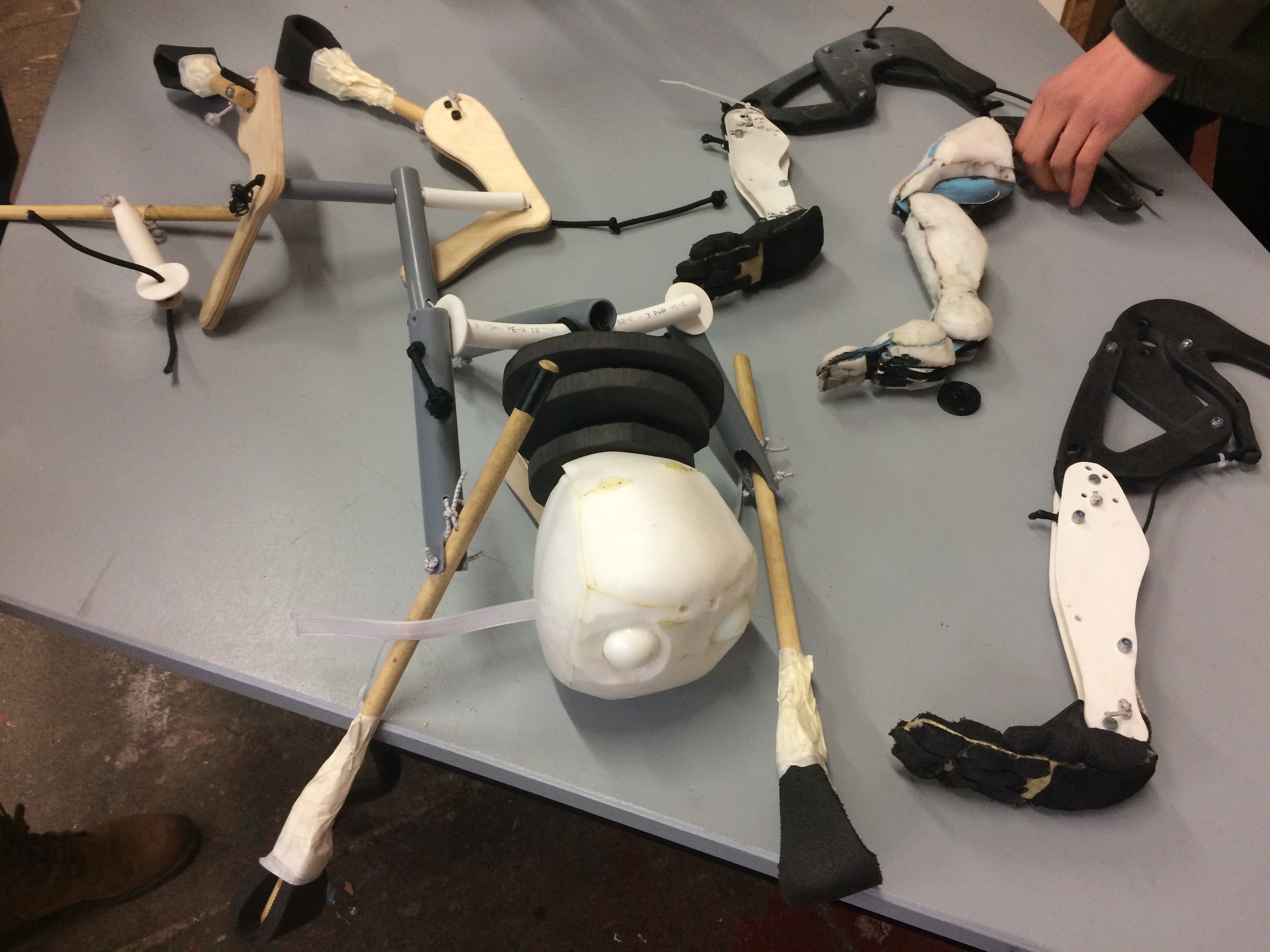
Hot on the heels of the devising with puppets workshop before Christmas came the chance to learn some puppet-making skills with the same company, Brunskill and Grimes. At the start of February a group of makers, designers, performers, directors, stage managers and various other assorted creatives gathered at the Workshop in Lambeth for the second of three two-day puppet-making workshops run by Jimmy Grimes and Andy Brunskill. The first took place just several days earlier and the third is happening mid-March, so if you happen to have booked on that workshop and don’t want any spoilers, stop reading here!
I cannot express how much I enjoyed the two days. I love my fellow performers but getting to meet so many people from other roles in the world of theatre was pure soul food. Everyone was so open and generous and interested to learn about each other’s work.
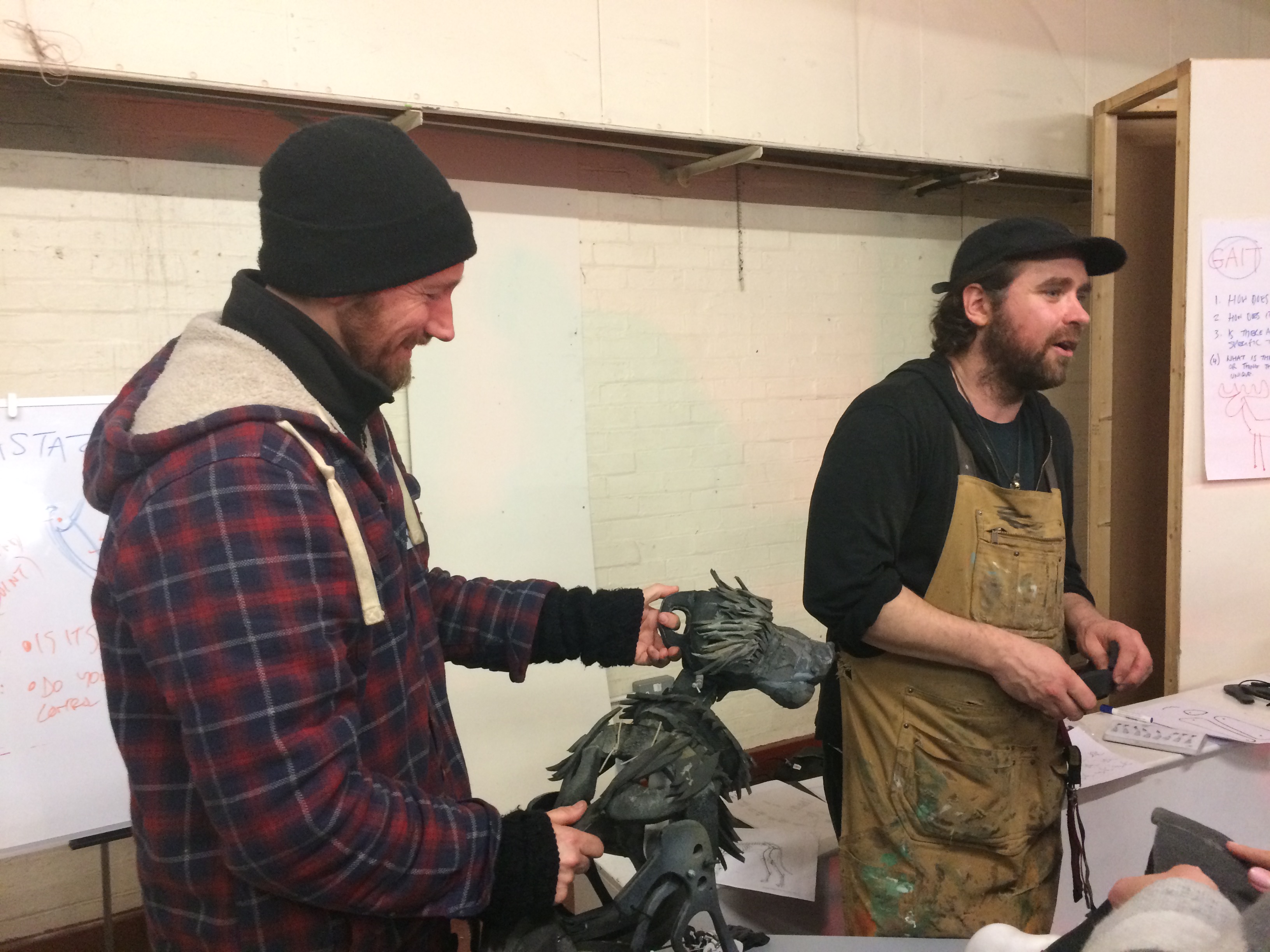
When we received the equipment list for the workshop I headed out to B&Q and went up and down the aisles clutching my list, excitedly placing my first ever proper saw (ie not a plastic kid’s one) in the basket. I have my own saw! Check me out! Granted, it is a junior hacksaw so I’m not going to be attacking any logs anytime soon. Add to that my first spanners and scalpel handle (I made a trip to Hobbycraft for that) and of course I needed a toolbox! So I rocked up at the workshop swinging my own little B&Q toolbox by my side, feeling convinced I looked every bit the professional handywoman. All the gear, no idea may have been more fitting.
During the workshop we had the opportunity to examine various puppets and puppetry mechanisms that Jimmy has created for this show or that. He explained the pattern-making technique using a sculpt and plastazote, a kind of foam that most puppet-makers I know rave about, and we had the chance to have a brief play with the material.
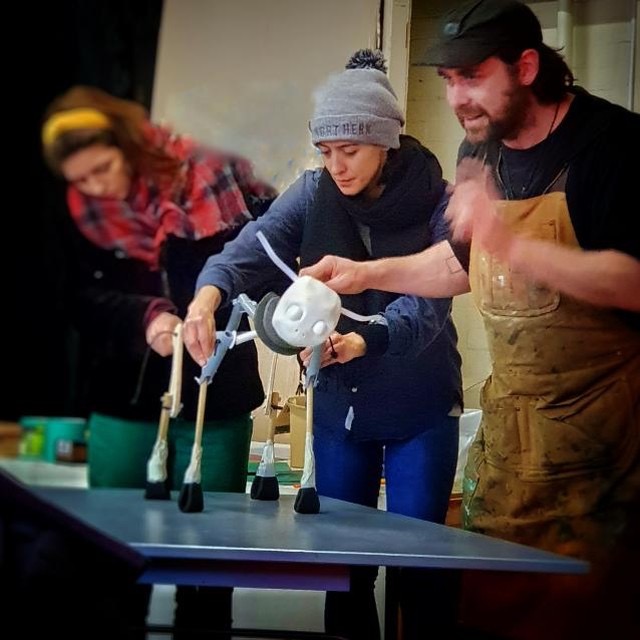
The two days built towards creating a jointed dog’s front leg with a trigger mechanism for the knee. I got to use my new scalpel handle and blades to cut out the various parts of the leg from a thin plastic called styrene, and the little spanners and hex keys came in handy for tightening the bolts on the joints. My thanks to the generous and patient fellow workshop attendees sitting next to me who helped me out here and there, from showing me how to fit the scalpel blade into the handle, to how to use the spanner to hold the bolt still on one side while turning the hex key on the other side to tighten it.
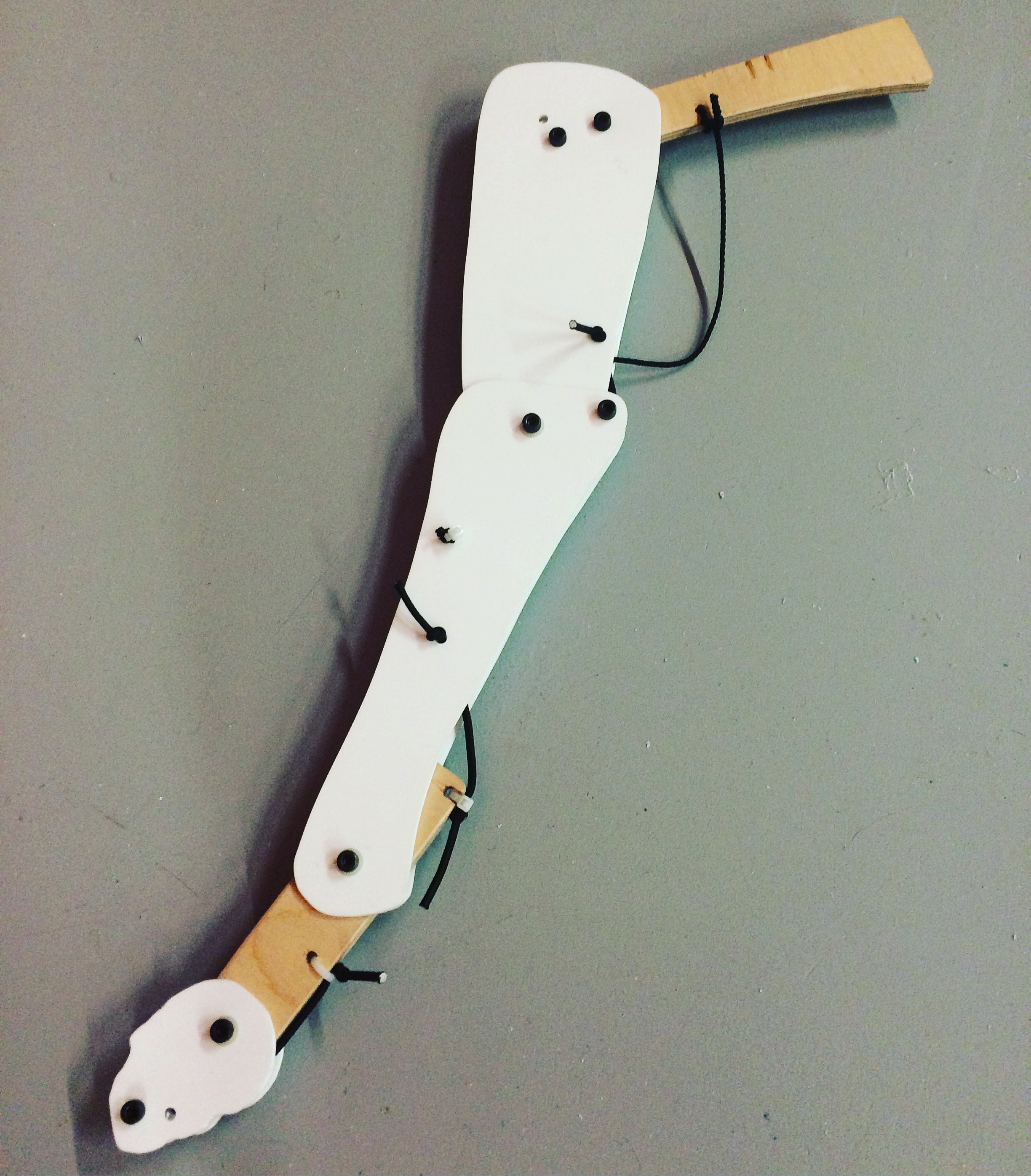
I won’t go into detail here about how we made the legs as I’ll probably end up confusing everyone, not to mention myself! Check out Jimmy’s Instagram page for a bunch of puppet-making clips.
So that’s another brilliant workshop with these guys. Their passion, talent and generosity really are a rare and wonderful thing.
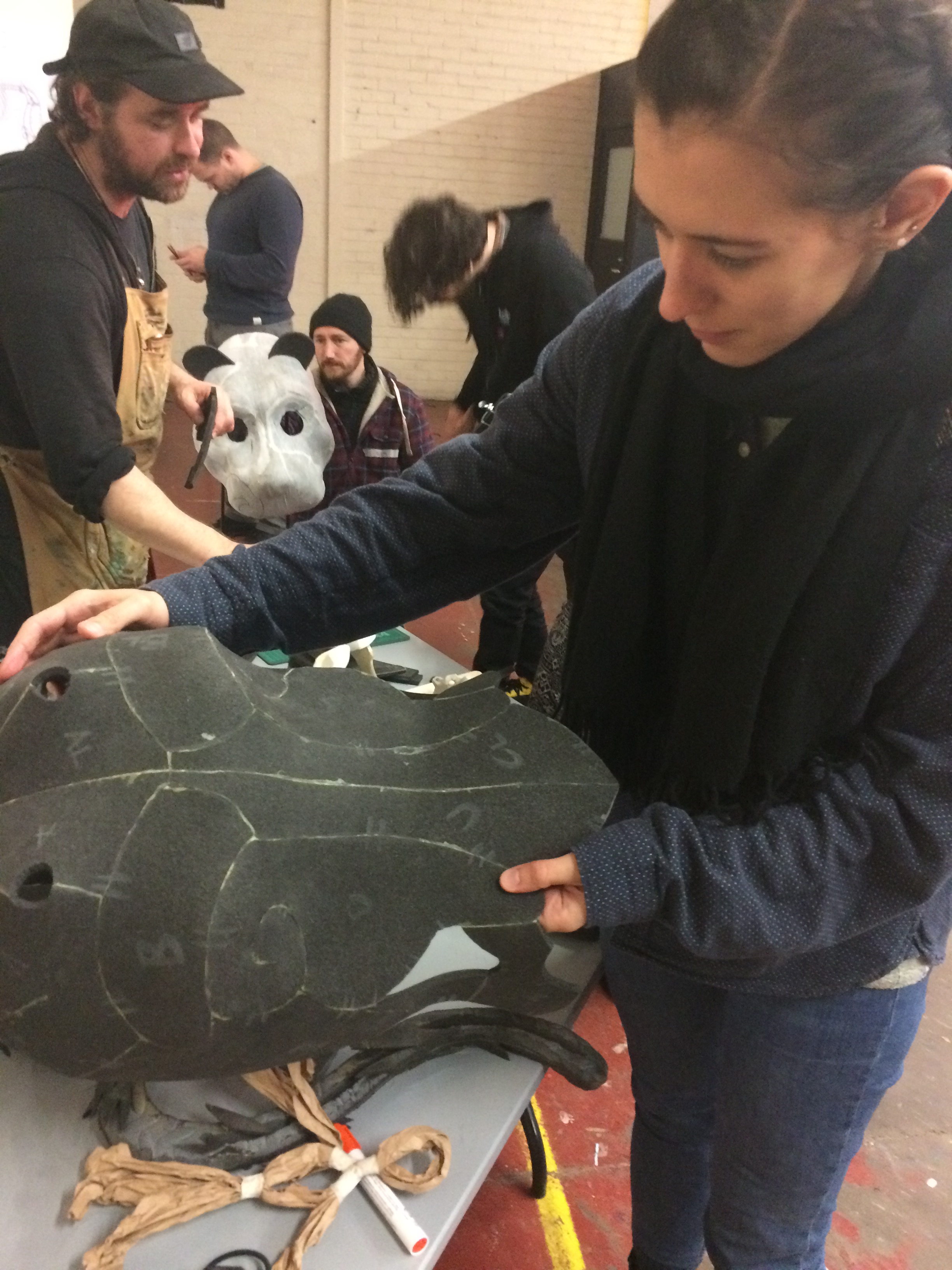
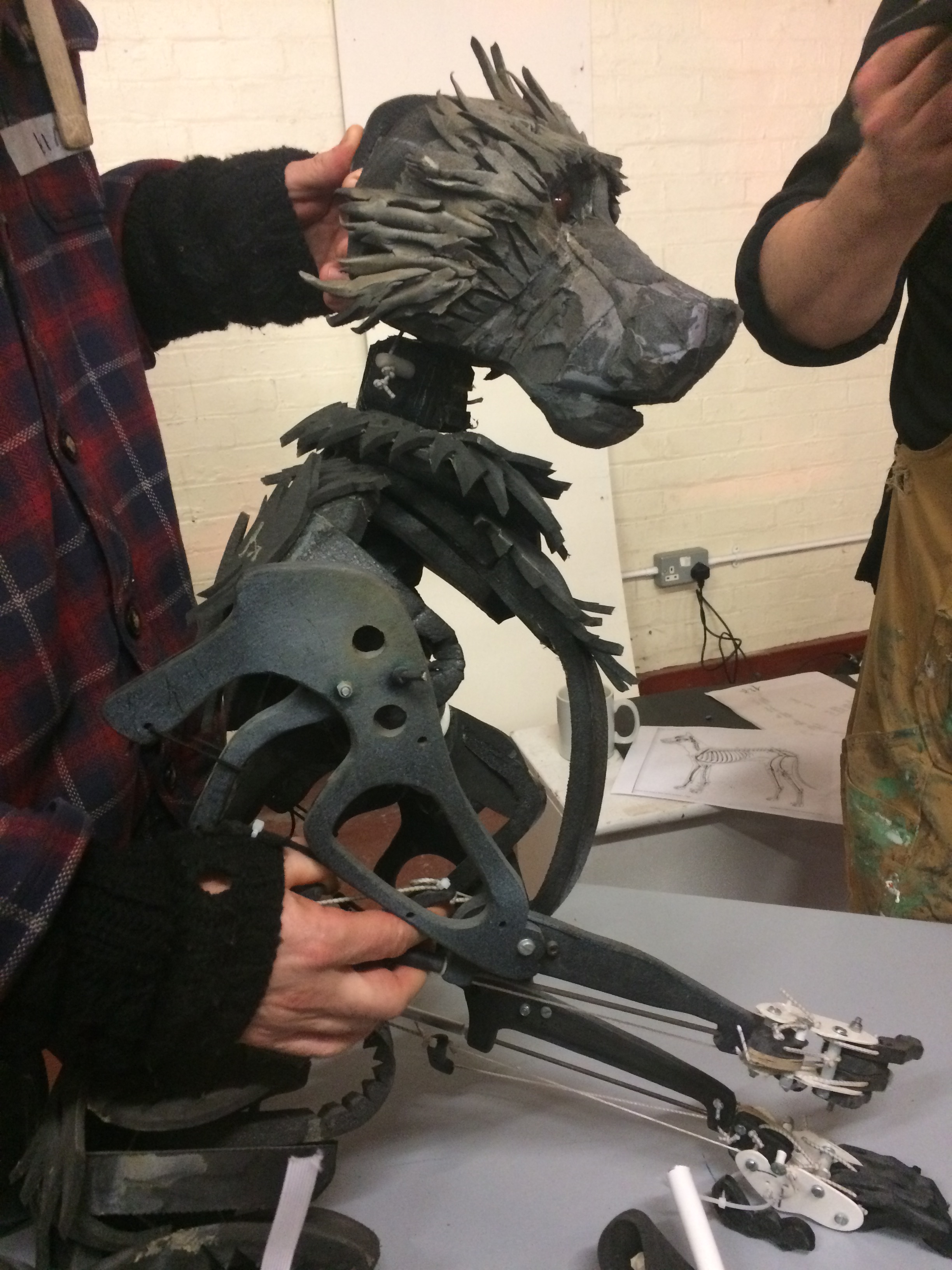
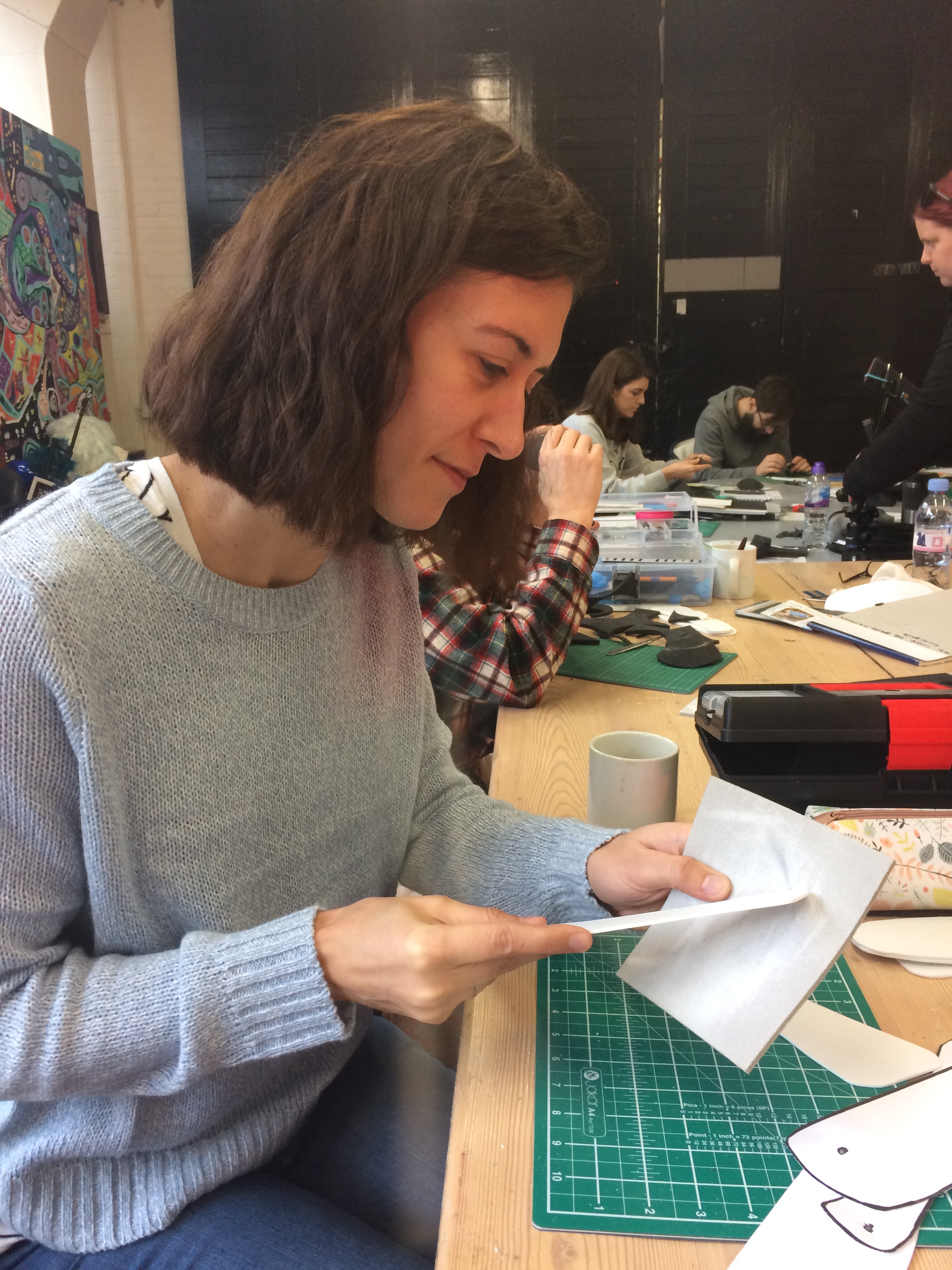
 As luck would have it, during my first few weeks in Cornwall I had the opportunity to take a peek in some local artists’ studios and take part in a print-making workshop as part of
As luck would have it, during my first few weeks in Cornwall I had the opportunity to take a peek in some local artists’ studios and take part in a print-making workshop as part of 

 Having never worked with ink in this way before it was very much trial and error for most of us, just having a go and having fun. As we became more confident using the ink and developed a sense of what patterns and effects we liked, some of us experimented with different colours, mixtures of colours, and different arrangements of our objects on the page. I found that often the second print using the ink-covered leaf would make a clearer picture than the first, which contained too much ink – less was more! When initially pressing the object into the ink we used a piece of newspaper so our fingers didn’t become covered in ink, and the ‘negatives’ this produced on the newspaper were often interesting pictures in their own right.
Having never worked with ink in this way before it was very much trial and error for most of us, just having a go and having fun. As we became more confident using the ink and developed a sense of what patterns and effects we liked, some of us experimented with different colours, mixtures of colours, and different arrangements of our objects on the page. I found that often the second print using the ink-covered leaf would make a clearer picture than the first, which contained too much ink – less was more! When initially pressing the object into the ink we used a piece of newspaper so our fingers didn’t become covered in ink, and the ‘negatives’ this produced on the newspaper were often interesting pictures in their own right.

































































